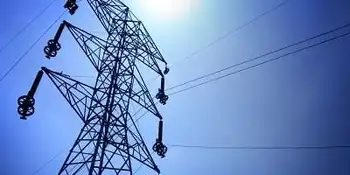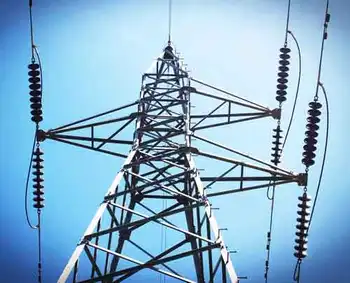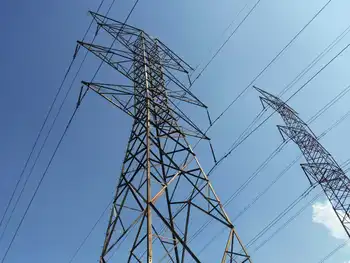Going green without disrupting the environment
In the U.S., President Barack Obama is spending $4.5 billion on a smart grid to allow renewable energy producers better access to electricity markets — that's in addition to the existing federal tax credit offered to renewable energy producers there. Canada's primary federal initiative is the $1.58-billion ecoENERGY program, which subsidizes green electricity producers one cent for every kilowatt hour of electricity produced for the project's first 10 years.
That's about half the value of the U.S. tax credit, says Robert Hornung, president of the Canadian Wind Energy Association, which represents the industry's big players.
Nevertheless, it has sparked a lot of interest: The ecoENERGY money was supposed to last until 2011 but, with so many producers ready to come online, it will likely run out by the end of 2009 — just two years into the program.
While there is growing commercial interest in green energy, aspiring wind producers — ranging from international industrial-sized operations to small co-operatives — still face a host of regulatory hurdles in Canada, including a gauntlet of environmental assessments, municipal bylaws, requirements of electric utilities and the demands of community activists that differ from province to province.
Although Canada's Constitution Act does not consider wind to be a natural resource as it does with forests, water or minerals — nobody can claim to own the wind-it does give the responsibility for electricity to the provinces, all of which have taken different approaches.
"The fact that we have so much uncertainty makes us a less attractive place to invest compared to the U.S.," Hornung said. Still, there are financial incentives for wind development in Canada.
In the past few years, most provinces have ordered their hydro utilities to purchase a certain percentage of their electricity from renewable energy sources including wind, water or solar power, even if it increases the cost to consumers and taxpayers.
That's been the case with Ontario, which leads the country in wind energy production at 782 megawatts annually; it's followed by Quebec, which generates 531 MW of wind energy annually. One megawatt of capacity can provide electricity to between 300 and 1,000 households over the course of a year, depending on how much wind is blowing.
With 500 MW of wind energy production, Alberta ranks No. 3, even though the province offers no mandate or subsidy for green energy; its market-driven system makes it easier for independent energy producers to compete on price with the province's primary source of electricity, coal.
By contrast, British Columbia has had an energy plan since 2002, but still has no wind power in its grid. The province's abundant hydropower already provides it with relatively cheap and low-emission energy, making it hard for wind entrepreneurs to compete. B.C.'s first wind farm, 102 MW on Bear Mountain in the province's northeast, is slated to come on line in late 2009 after an approval process that took more than two years.
Attracting investors in only part of the battle.
Wind power projects can take time to get approval, because developers must demonstrate the impact on local wildlife is minimal. Turbines can kill birds and bats, for example. The spinning blades can also throw ice and, very rarely, blades that can travel for some distance. On larger sites, erosion in the wake of construction can be a problem.
"We're the last province to go through the process, so there's been a learning curve," said T.J. Schur, director of external relations for Aeolis Wind Power, which developed the Bear Mountain project before handing it over to Alberta-based AltaGas.
"It would be great to see the environmental assessment process consider not just the initial impacts, but [also] the long-term benefits of wind energy with regard to climate change and gas emissions. There needs to be more balance."
In B.C., most of the proposed wind projects are slated for Crown land, which usually means they're a fair distance from populated areas. Not so in Ontario, Prince Edward Island and Nova Scotia, where wind farms have triggered resistance from community activists who say the turbines bring noise, safety and aesthetic concerns with them.
"If I step outside when the wind is blowing toward the house, it sounds like a traffic jam on the Don Valley Parkway," said Bev Howard, who lives near the West Cape of P.E.I. where energy giant Suez International is putting up 100 wind turbines that are expected to produce about 100 MW of electricity, some of which will be sold to U.S. markets.
In tourist-dependent P.E.I., the appearance of the slim white wind turbines is at the centre of a debate surrounding the issues of economics and esthetics.
A 2008 survey by the University of Prince Edward Island suggested that more than 82 per cent of visitors strongly or moderately agreed with the statement, "There should be more wind farms on P.E.I.," which makes a case for accelerating development. But at the same time, only 45 per cent agreed with the statement, "I feel a wind farm adds to the attractiveness of the area it is based," and the province can't afford to jeopardize the scenery that pulls in tourists.
The push to develop greener sources of power without disrupting the greenery is raising issues similar issues in communities across the country. As the commercial interest in — and opposition to — wind developments increases, governments are starting to step in to try to smooth things out.
Ontario's Green Energy Act, for example, was introduced in the legislature in February 2009. It would create provincial standards for municipal zoning and setbacks — the distance between turbines and neighbouring properties, roads and wildlife areas — in order to streamline the process for developers and prevent opponents from using irregularities in local bylaws to stall projects. Setback regulations vary greatly from jurisdiction to jurisdiction-anything from as little as 200 metres up to more than 1,000 metres.
"There's so much involved with the proper placement of them, municipalities should have a say, neighbours should have a say," said Bill Anderson, a spokesman for Wind Concerns Ontario, a coalition of local groups that bristles at the idea of windmills in their backyard.
But the biggest issue facing wind proponents in Canada is still simply getting their product to market.
Much of the country's electricity grid needs to be upgraded to allow wind energy to come on line and for the excess electricity to be exported during peak production times. Because wind energy can be erratic in even the windiest places, its megawatts must be backed up with more stable energy sources to make sure the grid has a steady flow of power.
Ironically, using more wind electricity can require an increase in fossil-fuel capacity, especially if hydro — considered the best match for wind because it can come on and off line quickly — is not available.
All of which has made Canadian utilities proceed cautiously with wind. Nevertheless, they are continuing to proceed.
"Utilities see wind as a novelty at first," Hornung said, "and then you get more wind farms on line and they see what tools they have to manage it and get comfortable with it."
Related News

Duke Energy Florida to build its largest battery storage projects yet
ST. PETERSBURG - Duke Energy Florida (DEF) has announced three battery storage projects, totaling 22 megawatts, that will improve overall reliability and support critical services during power outages.
Duke Energy, the nation's largest electric utility, unveils its new logo. (PRNewsFoto/Duke Energy) (PRNewsfoto/Duke Energy)
Collectively, the storage facilities will enhance grid operations, increase efficiencies and improve overall reliability for surrounding communities.
They will also provide important backup generation during power outages, a service that is becoming increasingly important with the number and intensity of storms that have recently impacted the state.
As the grid manager and operator, DEF can maximize the versatility of battery technology…




